Siemens Healthineers Bundle
Who Really Owns Siemens Healthineers?
Understanding Siemens Healthineers SWOT Analysis is vital for investors and industry watchers alike. The ownership structure of a company reveals its strategic direction and influences its market performance. Unraveling the intricacies of "Who owns Siemens Healthineers" is key to grasping its past, present, and future in the competitive healthcare industry.
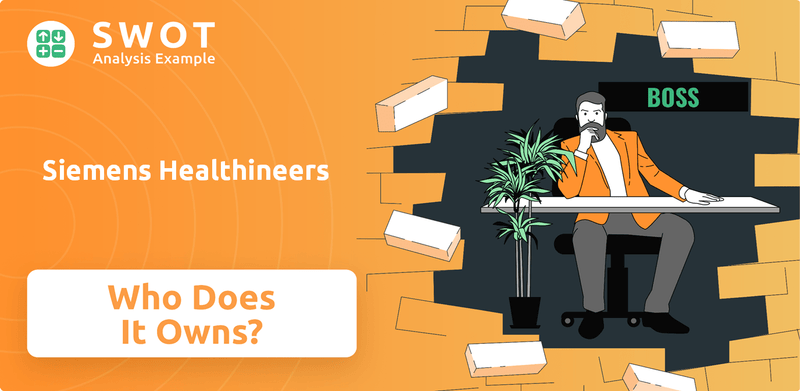
Since its IPO in 2018, Siemens Healthineers, a prominent medical technology company, has undergone significant shifts in its ownership landscape. This exploration will delve into the enduring influence of its parent company, Siemens AG, alongside the roles of institutional and individual investors. Analyzing the "Healthineers ownership" structure provides valuable insights into the company's financial information and its position within the healthcare market, including its market share and the strategies of its competitors.
Who Founded Siemens Healthineers?
The story of Siemens Healthineers, a leading medical technology company, begins with its parent company, Siemens AG. Founded in 1847, the original firm, Telegraphen-Bau-Anstalt von Siemens & Halske, laid the groundwork for what would become a global leader in healthcare technology. Understanding the early ownership structure is key to grasping the evolution of Siemens Healthineers and its place in the healthcare industry.
Werner von Siemens, Johann Georg Halske, and Johann Georg Siemens were the initial founders. Their vision and early innovations, such as the pointer telegraph, set the stage for the company's expansion. Over time, the ownership evolved, with the Siemens family playing a central role. This family-centric approach shaped the company's long-term strategy and its commitment to technological advancement.
The development of Siemens Healthineers is intertwined with its parent company's history. Early medical technology efforts included the production of X-ray tubes in 1896, just a year after the discovery of X-rays. This early focus on medical applications, combined with strategic mergers, eventually led to the formation of Siemens-Reiniger-Werke (SRW) in 1932, which produced medical diagnostic and therapeutic equipment. This historical context is crucial for understanding the current Healthineers ownership structure.
Founded on October 12, 1847, in Berlin.
Werner von Siemens, Johann Georg Halske, and Johann Georg Siemens.
Telegraph installations and electrical equipment.
Werner von Siemens' pointer telegraph.
Production of X-ray tubes began in 1896.
Siemens-Reiniger-Werke (SRW) formed in 1932.
The ownership of Siemens Healthineers has evolved significantly since its inception. Initially, it was deeply rooted within the Siemens family and the broader Siemens AG corporate structure. As a medical technology company, its journey reflects the strategic decisions made by its parent company. For more insights, consider exploring the Growth Strategy of Siemens Healthineers. In 2024, Siemens AG still holds a significant stake, reflecting its continued commitment to the healthcare industry. The company's financial information and investor relations provide further details on the current ownership structure and major shareholders.
Siemens Healthineers SWOT Analysis
- Complete SWOT Breakdown
- Fully Customizable
- Editable in Excel & Word
- Professional Formatting
- Investor-Ready Format
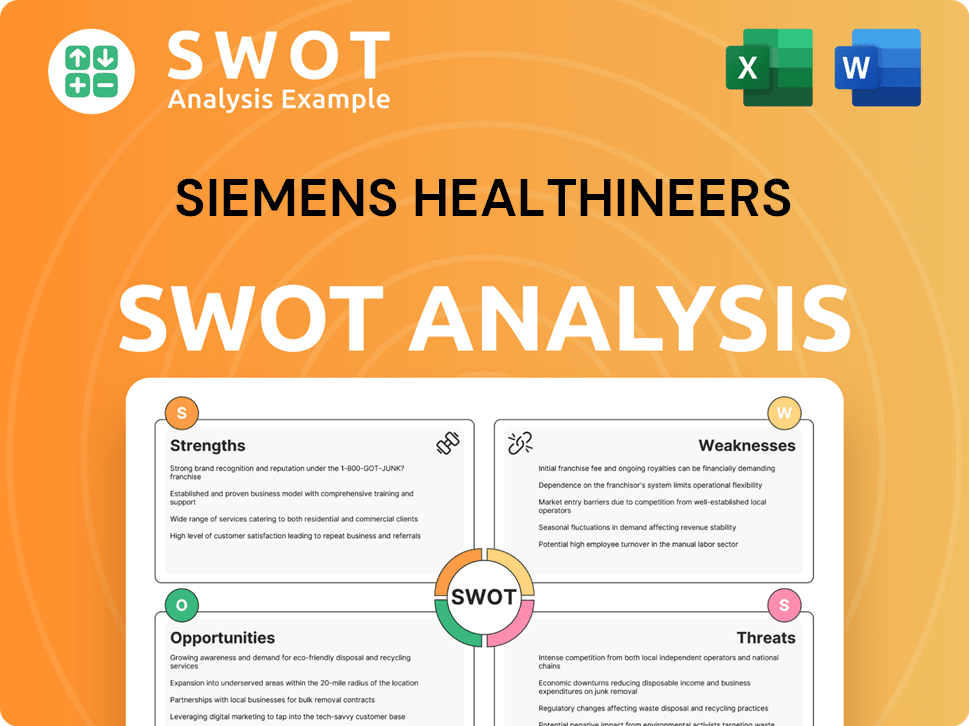
How Has Siemens Healthineers’s Ownership Changed Over Time?
The evolution of Siemens Healthineers' ownership is marked by its spin-off from Siemens AG. In May 2016, Siemens AG rebranded its healthcare division as 'Siemens Healthineers' as part of a new management strategy. This strategic move culminated in the Initial Public Offering (IPO) on March 16, 2018, on the Frankfurt Stock Exchange. The IPO saw a 15% stake sold at €28.00 per share, valuing the company at approximately €30 billion at its debut. This marked a significant shift, transforming the medical technology company into a publicly traded entity while maintaining a strong connection to its parent company, Siemens AG.
The healthcare industry has seen significant changes in ownership structures, with Siemens Healthineers being a prime example. The IPO was a pivotal moment, allowing the company to operate with greater autonomy while still benefiting from Siemens AG's backing. The company's strategic acquisitions, such as the $16.4 billion purchase of Varian Medical Systems in 2020, have further shaped its portfolio and market position, influencing its ownership dynamics and market share within the healthcare sector. Understanding the history of Siemens Healthineers ownership provides insights into its strategic direction and financial performance.
| Event | Date | Impact |
|---|---|---|
| Rebranding as Siemens Healthineers | May 2016 | Set the stage for the IPO and strategic focus. |
| Initial Public Offering (IPO) | March 16, 2018 | Made Siemens Healthineers a publicly traded company. |
| Share Sale by Siemens AG | February 2025 | Adjusted Siemens AG's stake to 73.0%. |
| Acquisition of Varian Medical Systems | 2020 | Expanded the company's portfolio and market position. |
Currently, Siemens AG remains the primary shareholder of Siemens Healthineers. As of the end of Q3 2023 and into fiscal year 2024, Siemens AG directly owned about 75% of Siemens Healthineers. Following a sale of 2% of shares in February 2025, Siemens AG's stake was adjusted to 73.0% of Siemens Healthineers AG's issued share capital. This makes Siemens AG the largest and controlling shareholder. Beyond Siemens AG, the ownership structure includes institutional, retail, and individual investors. Approximately 93.60% of Siemens Healthineers (SEMHF) stock is held by retail investors. Major institutional investors include Amundi, holding 0.49% of shares, and New Perspective Fund, with 0.48% ownership. This diverse ownership structure supports the company's financial stability and long-term growth. For more insights into the company's strategies, consider reading about the Marketing Strategy of Siemens Healthineers.
Key facts about Siemens Healthineers ownership structure.
- Siemens AG holds a 73.0% stake as of February 2025.
- Approximately 93.60% of the stock is held by retail investors.
- Major institutional investors include Amundi and New Perspective Fund.
- The IPO occurred on March 16, 2018, on the Frankfurt Stock Exchange.
Siemens Healthineers PESTLE Analysis
- Covers All 6 PESTLE Categories
- No Research Needed – Save Hours of Work
- Built by Experts, Trusted by Consultants
- Instant Download, Ready to Use
- 100% Editable, Fully Customizable
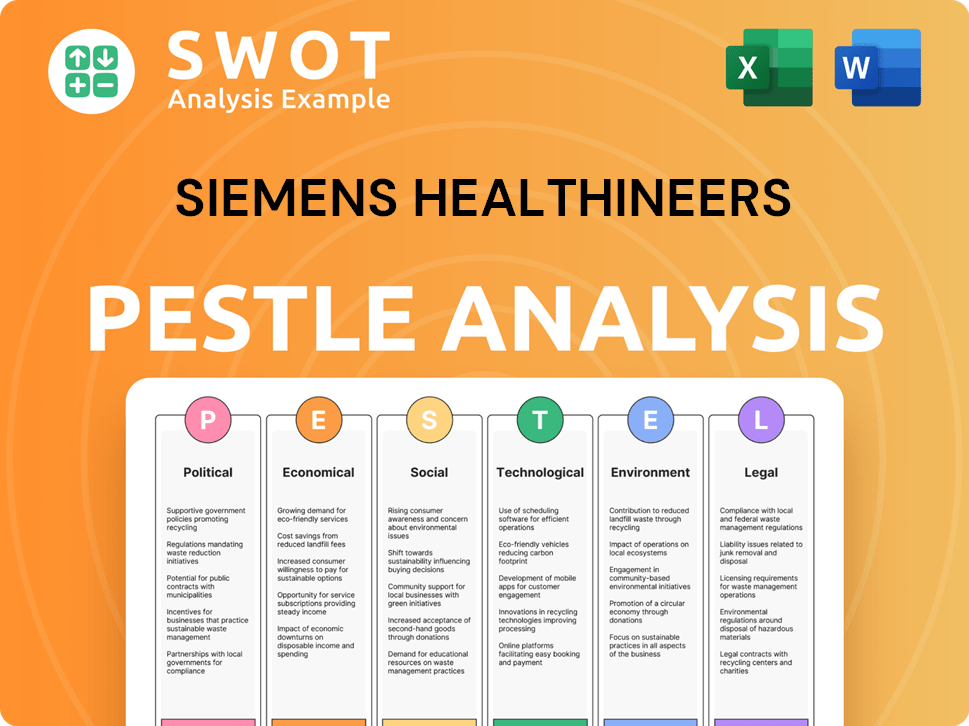
Who Sits on Siemens Healthineers’s Board?
The governance structure of Siemens Healthineers, a leading medical technology company, is designed around a two-tier system. This structure, common in German stock corporations, includes a Managing Board and a Supervisory Board. The Supervisory Board oversees the Managing Board and includes both shareholder and employee representatives, reflecting the principles of co-determination. The company's structure is adapted to its status as a DAX index member.
As of early 2024, the Supervisory Board consists of 20 members. While specific details on individual board members' direct shareholder representation beyond Siemens AG's influence are not fully available in the provided information, it is known that some members represent major shareholders, while others are independent or employee representatives. For example, Ralf P. Thomas serves as the Chairman of the Supervisory Board. For more insights into the company's background, you can explore the Brief History of Siemens Healthineers.
| Board Role | Description | Details |
|---|---|---|
| Supervisory Board | Oversees the Managing Board | Composed of shareholder and employee representatives (co-determination) |
| Managing Board | Responsible for day-to-day operations | Manages the company's activities |
| Chairman of the Supervisory Board | Leads the Supervisory Board | Ralf P. Thomas |
The voting structure at Siemens Healthineers is straightforward, based on ordinary registered shares. Each share generally carries one vote. As of March 25, 2021, the company had a capital stock of 1,128,000,000 shares, which corresponds to the total number of voting rights. Shareholders can attend and vote at the Annual Shareholders' Meeting based on their shareholding, as evidenced by their entry in the company's share register. There are no indications of special arrangements that would give disproportionate control to specific individuals or entities beyond their direct shareholding percentages. The company adheres to German securities trading law by publishing voting rights announcements.
Siemens Healthineers operates with a two-tier board structure, including a Supervisory Board that oversees the Managing Board. The voting rights are based on ordinary shares, with each share generally equating to one vote. This ensures a transparent and equitable governance framework.
- Two-tier board structure: Managing Board and Supervisory Board.
- Voting rights: One vote per ordinary share.
- Supervisory Board composition: Includes shareholder and employee representatives.
- Governance: Aligned with German corporate governance standards.
Siemens Healthineers Business Model Canvas
- Complete 9-Block Business Model Canvas
- Effortlessly Communicate Your Business Strategy
- Investor-Ready BMC Format
- 100% Editable and Customizable
- Clear and Structured Layout
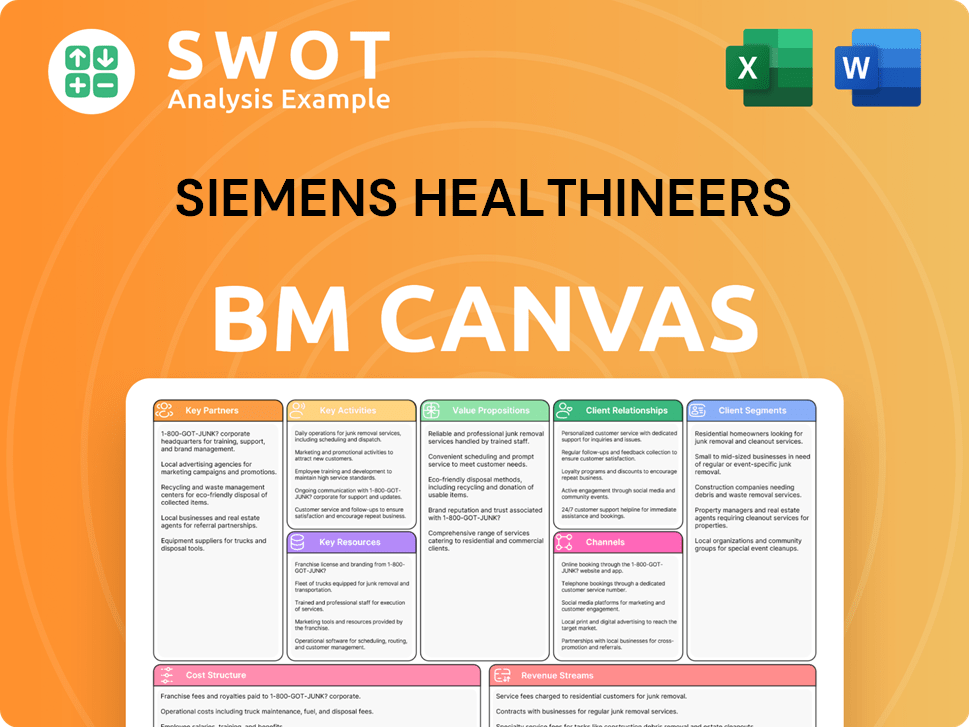
What Recent Changes Have Shaped Siemens Healthineers’s Ownership Landscape?
In the past few years, the ownership structure of Siemens Healthineers has seen significant developments. In February 2025, Siemens AG reduced its stake by selling 2% of its shares, generating approximately €1.45 billion. This transaction brought Siemens AG's ownership down to 73.0% of Siemens Healthineers' issued share capital. This move can increase the availability of shares for other investors, potentially diversifying the shareholder base. The evolution of Healthineers ownership reflects ongoing strategic financial activities.
Siemens Healthineers has also been actively involved in share buyback programs. A program initiated in March 2025, scheduled to run until January 2026, is authorized for up to €350 million. By early June 2025, the company had already repurchased 3,974,024 shares under this program. These buybacks can positively impact earnings per share and enhance shareholder value. Understanding Siemens Healthineers stock ownership is key for investors.
| Date | Event | Details |
|---|---|---|
| February 2025 | Share Sale | Siemens AG sold 2% of shares, raising approximately €1.45 billion, reducing its stake to 73.0%. |
| March 2025 | Share Buyback Program | Announced a buyback program running until January 2026, with a volume of up to €350 million. |
| Early June 2025 | Share Buyback Progress | Repurchased 3,974,024 shares under the buyback program. |
Leadership changes and strategic investments also highlight the company's direction. The extension of CEO Bernd Montag and CFO Jochen Schmitz's mandates until the end of February 2031, announced in March 2025, provides stability. Furthermore, the appointment of John Kowal as President and Head of the Americas, effective April 14, 2025, and Peter Koerte as Chief Technology and Chief Strategy Officer for Siemens AG, effective October 1, 2024, reflect strategic adjustments. The healthcare industry is also seeing increased institutional ownership.
Siemens Healthineers invests over $900 million annually in R&D in the U.S., demonstrating a commitment to innovation. The company's focus is on personalized, efficient, and accessible healthcare.
Over 70% of new product offerings in 2023 included AI, showcasing a strong emphasis on digitalization. This positions the company well within the broader trend of digitalization in healthcare.
A collaboration with DeepHealth in December 2024 for AI-powered ultrasound workflows highlights strategic alliances. These partnerships support Siemens Healthineers' market leadership.
The company is focused on operational efficiency and is experiencing an increase in institutional ownership. These trends are shaping the future of the medical technology company.
Siemens Healthineers Porter's Five Forces Analysis
- Covers All 5 Competitive Forces in Detail
- Structured for Consultants, Students, and Founders
- 100% Editable in Microsoft Word & Excel
- Instant Digital Download – Use Immediately
- Compatible with Mac & PC – Fully Unlocked
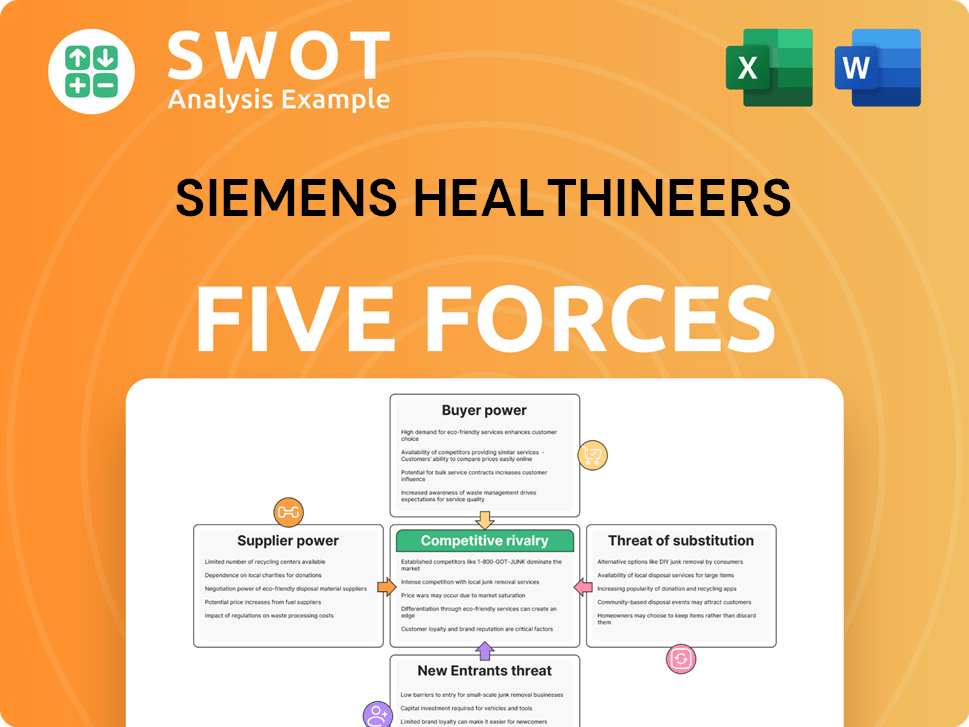
Related Blogs
- What are Mission Vision & Core Values of Siemens Healthineers Company?
- What is Competitive Landscape of Siemens Healthineers Company?
- What is Growth Strategy and Future Prospects of Siemens Healthineers Company?
- How Does Siemens Healthineers Company Work?
- What is Sales and Marketing Strategy of Siemens Healthineers Company?
- What is Brief History of Siemens Healthineers Company?
- What is Customer Demographics and Target Market of Siemens Healthineers Company?
Disclaimer
All information, articles, and product details provided on this website are for general informational and educational purposes only. We do not claim any ownership over, nor do we intend to infringe upon, any trademarks, copyrights, logos, brand names, or other intellectual property mentioned or depicted on this site. Such intellectual property remains the property of its respective owners, and any references here are made solely for identification or informational purposes, without implying any affiliation, endorsement, or partnership.
We make no representations or warranties, express or implied, regarding the accuracy, completeness, or suitability of any content or products presented. Nothing on this website should be construed as legal, tax, investment, financial, medical, or other professional advice. In addition, no part of this site—including articles or product references—constitutes a solicitation, recommendation, endorsement, advertisement, or offer to buy or sell any securities, franchises, or other financial instruments, particularly in jurisdictions where such activity would be unlawful.
All content is of a general nature and may not address the specific circumstances of any individual or entity. It is not a substitute for professional advice or services. Any actions you take based on the information provided here are strictly at your own risk. You accept full responsibility for any decisions or outcomes arising from your use of this website and agree to release us from any liability in connection with your use of, or reliance upon, the content or products found herein.